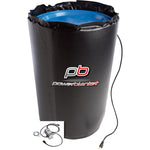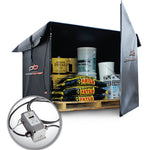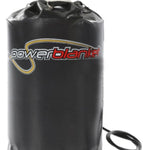You have no items in your shopping cart.
Article At-a-Glance
When Should You Use Concrete Curing Blankets?
Concrete curing blankets should be used when the average daily air temperature is below 40°F (5°C) or when temperatures are not greater than 50°F (10°C) for more than half of any 24-hour period, ensuring the concrete is protected from freezing until it reaches a minimum strength of 500 psi, typically within the first 24 hours.
Key Takeaways
- Monitor Temperature Conditions: Use concrete curing blankets when the average daily air temperature is below 40°F (5°C) or if temperatures remain under 50°F (10°C) for more than half of any 24-hour period to prevent freezing.
- Ensure Proper Curing Time: Keep blankets on the concrete until it reaches a minimum strength of 500 psi, typically within the first 24 hours, to ensure optimal curing and prevent damage.
- Select Appropriate Blanket Type: For temperatures close to freezing, standard insulated blankets may suffice, but for more severe cold, consider using electric heating blankets like CureMAX or Powerblanket for additional heat.
- Avoid Freezing in Initial Stages: Never allow concrete to freeze within the first 24 hours after pouring, as this can compromise the integrity and strength of the concrete.
- Utilize Advanced Solutions: In extreme cold, opt for advanced curing solutions with electric heating elements to maintain consistent temperatures and achieve maximum PSI levels efficiently.
So you want to cure concrete but it's freezing cold outside. You have a project that can't be delayed any longer but the ground is frozen. You need to keep your work crews working, but temperatures are sub zero. Sound familiar? The list of reasons for concrete work stoppage and scheduling delays can be endless.
So first, let's start with a few basics... Cold weather concrete can be classified as a period of more than three days where some specific conditions occur under certain temperatures. For example - The American Concrete Institute defines that concrete will be exposed to cold weather when the following conditions exist:
* The air temperature is not greater than 10°C (50°F) for more than one-half of any 24 hour period
The goal is to produce a quality product, with maximum PSI levels in as short a time as possible WITHOUT adding harmful additives and hardeners. The solution is Insulated Curing blankets with an electric heating element (when possible). There are a few manufactures who make these special construction covers... names like Powerblanket, Curemax, and RapidThaw (for hi-heat application where the ground must be thawed quickly prior to pouring). Engineered specifically for cold, wet, freezing environments... these manufacturers produce some of the best curing and thawing solutions available to the market. ETL certified to UL/CSA safety standards, welded seems to keep moisture away from the heating element. rip-stop vinyl for rugged outdoor applications, and GFI plugs for maximum safety. Check 'em out, you won't be disappointed. Curing and thawing technology for a new generation of builders. Cure concrete in any weather condition (hot or cold). Wet cure the concrete without drying it out. Won't cause effloresence or misscoloring of concrete. Produces maximum PSI levels, up to 3x faster than using standard insulated concrete blankets. Call today for pricing and availablility.













